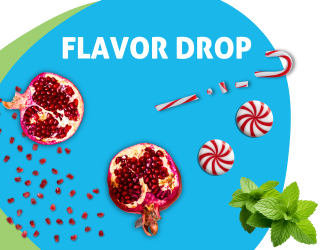Sugar remains under scrutiny, even though the U.S. market for it is valued at $1b more than the next leading sweetener, brown sugar, according to Nielsen. In addition to sitting on many tables, either in shakers, recipes or packaged goods, it also continues to be a hot topic of conversation, especially among industry professionals. With influences such as celebrities like Gwyneth Paltrow and Alec Baldwin rebuking the effects of the sweet compound and medical professionals charging parents with serving their children water instead of juice, customers are requesting reformulations or low sugar products from the onset, so it’s hard to ignore that something’s gotta give. Enter the sugar reduction toolbox – in it, we find several technologies and alternatives to sugar. One in particular, Allulose, is starting to gain traction but also raising some questions. We wanted to help clarify what this monosaccharide is, how you may be able to leverage it in your formulations, and the impact to your nutrition facts panel.
As the typical sugar suffix “-ose” (e.g. glucose, sucrose) implies, Allulose (a.k.a. D-psicose) is a type of rare sugar that naturally occurs in small quantities in fruit and other plants like wheat, jackfruit, figs and raisins. Chemically speaking, it has the same makeup as fructose, with a slightly different arrangement, and though it acts like sugar in many applications, it is 70% less sweet, and 90-95% less caloric. After being commercially introduced to the market in 2015 by Tate & Lyle, it has been used by brands who prioritize lower sugar content in their formulations and may continue to be, especially in those targeted towards diabetics or other consumers monitoring their blood sugar levels. Allulose is primed for use in the aforementioned products as it doesn’t contribute to a blood sugar spike since it’s barely metabolized. It also can assist with mouthfeel and functions similarly to maltodextrin, a common food additive used to extend shelf life and aid with the texture of products.
Despite its advantages, there are several reasons why more brands haven’t hopped on the Allulose bandwagon, including the fact that it’s expensive. Since it’s not as sweet as traditional sugar, more needs to be used to achieve similar sweetness levels. Additionally, up until April 2019, the FDA had ruled that since Allulose is a type of sugar, it needed to be included on the corresponding lines on the nutrition facts panel: total carbohydrates, total sugar and added sugar. The updated FDA guidance released earlier this year now states that it is exempt from counting towards the total and added sugars, though it still needs to be included on the total carbs line. The FDA recognizes that the caloric difference, the negligible impact on blood sugar and the fact that it doesn’t promote tooth decay like traditional sucrose subjects it to less stringent regulations.
Since Allulose still needs to be included in the total carbohydrate count, it may not be the most appropriate sugar substitute in products targeted towards low-carb dieters (e.g. Atkins, WW, Keto), though some posit that if small enough amounts are used this sweetener won’t be significant enough to detract from the Keto diet in particular. While there is some merit to Allulose, we know that stevia has already achieved widespread acceptance as the most popular non-nutritive sweetener, with sales growing 12% from 2017 to 2018. Stevia has been available direct to consumers for use as a household sweetener for years, and now consumers also have their pick of Allulose (sometimes a part of a sweetener blend), often marketed as a keto friendly sugar alternative on Amazon. Even with this increased accessibility, we expect it to take some market share from sugar (though not a significant amount in the near future) before it encroaches on stevia territory.
Looking to reformulate your product with less sugar? Email the beverage development experts at thedrinktank@imbibeinc.com to figure out what your next beverage project will look like. If you’re interested in learning more about what else is in our sugar reduction toolbox, request a Bevelocity presentation on Sugar Reduction by contacting your Business Development Representative.



